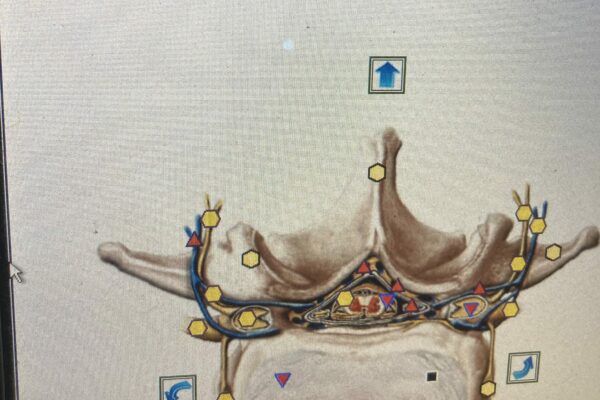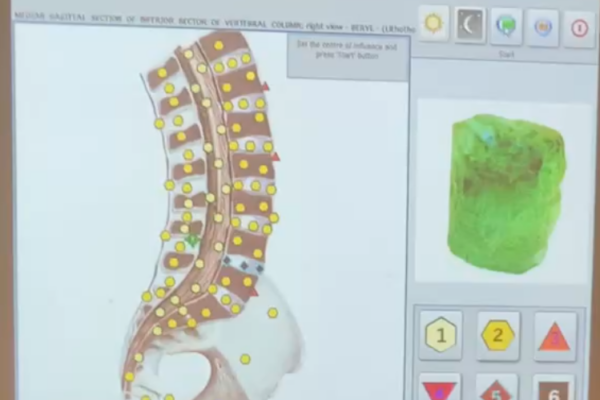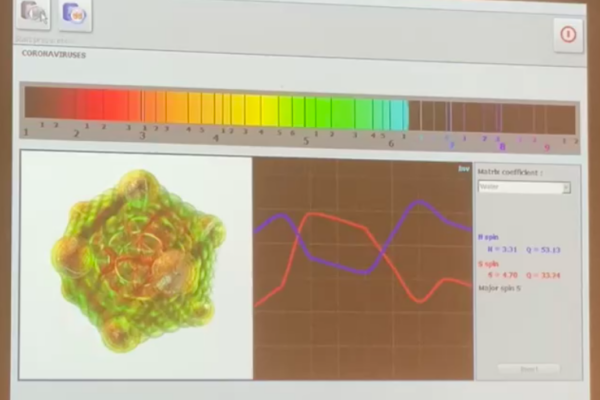
Who doesn’t love giant rough gemstones? Here’s 3,000 carats of Aquamarine. More on the powerful frequencies from gorgeous gemstones to come; the short of it is, aquamarine is one of a few dozen gemstones that directly interact with the human body. You don’t need such a big piece, but they do need to be natural, untreated, though tumbled snooth is okay. This one is a gift from some frequency friends in India. Very powerful stuff.
First Lumbar Vertebra — A Paratrooper’s Busted Back!
A close up of a former US Army paratrooper’s beaten to shit backbone, first lumbar vertebra. This guy’s a great hero of mine, a Southern gentleman from Tennessee, was in 126 countries, thinks he parachuted into most of those, it destroys the knees, the back and the next slide will be of the old boy’s…
Body Scan
On some level, this whole website and the core of the RF LAB is this pic: this is the most advanced technology we’ve ever played with. After all the history and artifacts, it’s this modern version that most excites us and is the new favorite thing of everyone who’s spent time in the lab. At…
Blue Beryl vs. an Old Journo’s Back
This one really ties the room together… watch a 25 second recording of this old journo’s tired back get energized by a machine (of course, you’ve seen that already…) but, here, the machine uses lithotherapy — ie. healing with the frequency of gemstones — to use the frequency of the Blue Beryl stone to attack…
Zapping a Real Coronavirus
Enjoy this satisfying 5-second video of a real Coronavirus detected in this old journo’s nose being zapped with energy. How it works is that the red is us and the blue is where we should be, so you invert the two curves, to push the body back towards homeostasis. This is getting blasted into a…







Leave a Reply